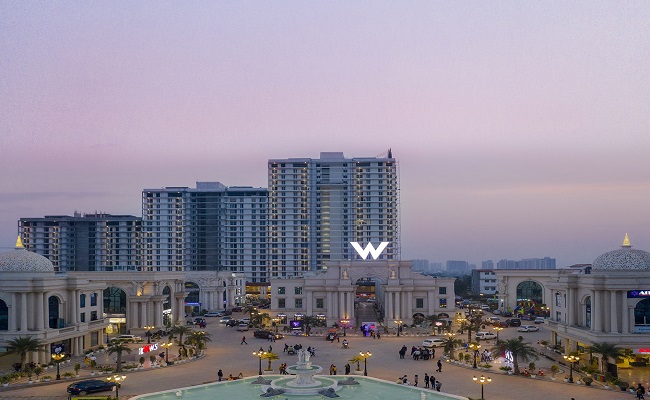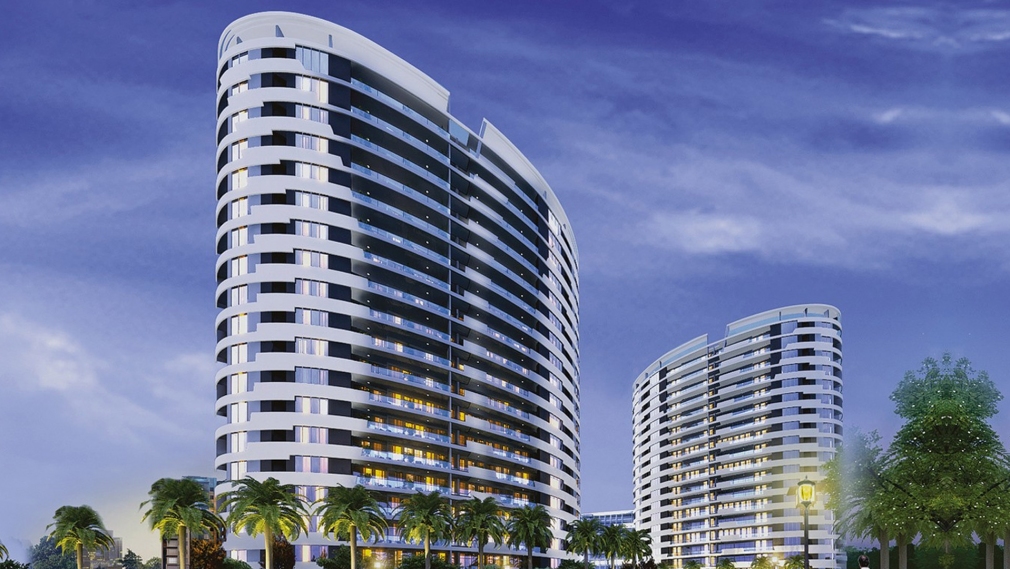The real estate market has been controlled by the Tier 1 cities like Delhi, Mumbai, Bengaluru, and Hydearabad. However, a great shift has been seen towards Tier 2 and Tier 3 cities. The growth in tier 3 cities and tier 2 cities has been phenomenal, and these are growing at an extremely fast pace. In the past, Tier 1 cities like Hyderabad, Bengaluru, Delhi-NCR, and Mumbai ruled the Indian real estate industry. Nonetheless, a notable trend toward Tier 2 and Tier 3 cities has been noted in recent years, with increasing interest in commercial property in Faridabad as part of this shift.
These tiny cities are developing fast, bringing in developers, investors, and homebuyers. Lots of reasons, including government initiatives like the Smart Cities Mission, improved connection brought about by better travel infrastructure, and rising middle-class free to spend budgets, contribute to this trend. As a result, demand for houses, companies, and stores is rising in these cities.
In this blog we will be looking at the rise of tier 3 and tier 2 cities real estate and what’s the future of this upward trend.
What Are Tier 2 and Tier 3 Cities?
But what exactly are Tier 2 and Tier 3 cities? Let’s look at the basics of these cities:
Tier 2 Cities – Tier 2 cities are mid-sized cities that are going through swift growth and economic growth. They often benefit from spreading effects by serving as satellite cities to bigger metropolitan areas. The Indian cities of Pune, Jaipur, Chandigarh, and Kochi are instances of Tier 2 cities.
Tier 3 Cities – The Tier 3 cities are growing into important regional hubs. They may not be able to compete in terms of Tier 2 cities through the same level of infrastructure, they do have lower-cost housing alternatives, lower living expenses, and less traffic. India’s Tier 3 cities include, for instance, Nagpur, Coimbatore, and Indore.
Factors Driving Growth in Tier 2 and Tier 3 Cities
These are some of the factors that are driving growth in these areas. From the affordable housing Tier 2 cities and Tier 3 cities to many more. Let’s look at these factors:
- Affordability
One of the major factors driving growth is affordable housing in Tier 2 cities and tier 3 cities. The property prices are lower in these areas than in Tier 1 cities.
- Infrastructure Development
Government schemes like the Smart Cities Mission, along with greater investment in transport and utilities, are making a difference in these cities’ infrastructure. This includes the building of roads, highways, metro rail systems, airports, and additional critical infrastructure that will make these cities accessible to businesses and people.
- Migration Trends
People increasingly move to smaller cities in search of a higher quality of life, lower living costs, and less congested areas. This trend is driving up demand for residential and commercial real estate Tier 3 cities and Tier 2 cities.
- Increased Employment Opportunities:
The growth towards manufacturing, IT along with other industries is creating fresh job opportunities in these regions.
- Improved Connectivity
Better connectivity through highways, railways, and airways allows faster travel to these cities. This faster connectivity draws businesses, tourists, and investors, which boosts the local economy and real estate market.
- Government Policies and Incentives
Government initiatives, such as affordable housing schemes, rebates on taxes, and simplified requirements for regulation, promote investment in Tier 2 cities and Tier 3 cities. These benefits help builders build affordable housing and commercial complexes and attract buyers.

Emerging Real Estate Trends in Tier 2 and Tier 3 Cities
The emerging real estate trends in smaller cities predicts a very positive image towards real estate opportunities in Tier 3 cities and Tier 2 cities. Some of these emerging trends are:
- Residential Growth:
These cities have a rise in demand for affordable houses, gated communities, and luxury villas.
- Commercial Spaces:
The growing number of IT parks, business centers, and co-working spaces has raised demand for commercial real estate.
- Eco-Friendly Developments:
Environmentally friendly and sustainable housing developments have become increasingly popular and increased the demand for real estate opportunities in Tier 3 cities and Tier 2 cities.
- Real Estate Technology:
The adoption of technology in real estate has influenced how property are bought, sold, and managed.
Also Read – Is It Good to Invest in Commercial Property in Greater Noida?
Why You Should Consider Investing in Tier 2 and Tier 3 Cities
There are multiple reasons as why investment in Tier 2 cities and Tier 3 cities is a good choice:
- Affordable Housing Projects
The demand for affordable housing is growing at an extremely rapid pace and can provide great returns because of the growth in Tier 3 and Tier 2 cities.
- Retail and Commercial Real Estate
Investing in stores, malls, and office spaces may bring in regular rental income along with capital appreciation.
- Land Acquisition:
Investment in land can be an effective long-term strategy, especially in high-growth areas.
Representation of the trend showing how real estate investment is shifting toward Tier 2 and Tier 3 cities in India over the last 10 years:
| Year | Trend in Investment | Reasons for Growth | Key Cities Witnessing Growth |
|---|---|---|---|
| 2013-2015 | Initial interest in Tier 2 and Tier 3 cities due to affordability. | Lower land costs, emerging economic opportunities, and growing urbanization. | Jaipur, Kochi, Indore, Lucknow. |
| 2016-2018 | Rise in residential real estate demand in smaller cities. | Expansion of industries and infrastructure (e.g., better roads and airports), coupled with affordability. | Coimbatore, Vadodara, Chandigarh. |
| 2019-2020 | Growth in commercial real estate and industrial hubs in smaller cities. | E-commerce boom, improved connectivity, and focus on warehousing and logistics. | Bhubaneswar, Pune, Surat. |
| 2021-2022 | Surge in real estate demand post-pandemic as remote work trends shifted preferences to smaller cities. | Lower cost of living, availability of larger spaces, and government incentives for real estate and startups in these regions. | Jaipur, Lucknow, Ahmedabad, Mysuru. |
| 2023 | Continued growth in investments due to urbanization and infrastructure upgrades. | Development of IT hubs, metro connectivity, and increased job opportunities in Tier 2 and 3 cities. | Chandigarh, Trivandrum, Indore. |
Key Highlights:
- Residential Property: Demand for affordable housing and integrated townships grew consistently in these cities.
- Commercial Real Estate: Increased by 20% in 2021, with a significant rise in co-working spaces and IT parks.
- Factors Contributing: Rapid urbanization, government initiatives, and economic diversification have fueled interest in these cities.
Tier 2 and 3 cities have proven to be lucrative investment hubs due to their growth potential, affordability, and improved infrastructure, making them an attractive alternative to saturated Tier 1 markets
In Emerging Cities like Lucknow and Chandigarh there are various property options available like
Challenges in Tier 2 and Tier 3 Real Estate Markets
There are some challenges when you look at the real estate trends in smaller cities:
- Infrastructure and Urban Planning Issues:
Some cities might face infrastructure development problems such as limited power, water, and handling of waste. Poor urban planning may result in traffic jams and other difficulties.
- Regulatory Hurdles
Navigating local laws while obtaining the necessary approvals can be tough and time-consuming. Delays in approvals may impact project deadlines and costs.
- Market Saturation Risks
Oversupply of houses in certain areas may result in price drops and lower rental returns. It is essential to perform thorough market research and find areas with high demand and low supply.

Why You Should Consider Investing in Tier 2 and Tier 3 Cities
Why you should be investing in Tier 2 and Tier 3 cities and why they have these cities have the best property to invest in India right now:
- Long-Term Investment Potential:
These cities offer strong possibility of future growth due to factors like urbanization, development of infrastructure, and strengthened disposable income.
- Lower Entry Costs:
In comparison to Tier 1 cities, these towns have lesser entry costs for real estate buyers.
- Diversification:
Buying in Tier 2 and Tier 3 cities contributes to diversifying your real estate portfolio while reducing risk as well.
The Tier 2 and Tier 3 cities are truly emerging as the highly appreciated and promising investment destinations in India. By understanding all the above factors that are driving growth and carefully understanding these investment opportunities, you can easily capitalize through investments in these cities. Do consider getting the right advice and consultation from the professionals. Omaxe, a major real estate company in India, will help you navigate the complex real estate market and help you invest in the right property that fits your dreams.


